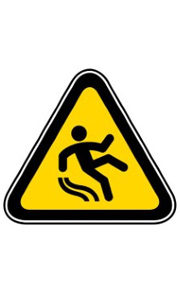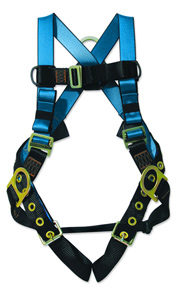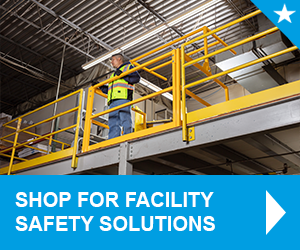
In today’s modern construction industry, fall safety is a top priority. But prior to the 1970 inception of the Occupational Safety and Health Administration (OSHA), employers were not held accountable for maintaining safe working conditions for their employees. At the very least, employers would post signage to delineate a fall risk area or hazardous environment, but by and large, employees were responsible for their own safety. Fortunately, soon after OSHA entered the construction industry scene, new incentives motivated employers to address potential fall hazards at workplaces. Because employers are held responsible to provide safe working conditions, personal protective equipment, and safety training, employees work much more safely today than they did in years past.
History of OSHA Fall Protection Standards
The Occupational Safety and Health Administration (OSHA) is a division of the United States Department of Labor that regulates safe working conditions for employees. During the 1970s and 1980s, OSHA began to develop and enforce fall protection standards for industries such as construction, mining, transportation, and manufacturing. OSHA’s involvement in these industries changed employers’ attitudes regarding fall safety. OSHA conducted unannounced inspections of workplaces, and failure to meet their standards gave new incentives for employees to provide appropriate safety protocols. Expensive fines mounted for employers who were noncompliant, and additionally, employers’ litigation costs from fall-related injuries increased as employees began to advocate for their rights to safe working conditions. Changes resulted throughout the construction industry to incorporate passive (guardrails and gates) and active (ropes and body harnesses) fall protection systems for employees.
In 1994, OSHA instituted the Subpart M Fall Protection Standard for construction workplaces and their different needs. The standard applies to employees working at a height of 6-feet or higher. Subpart M covers protection from falling objects, falls from tripping over holes, falling through holes, and protection while working around dangerous equipment without regard for height. Employers are instructed to use fall protection systems such as guardrails, safety nets, or personal fall arrest systems.
Then, in 2011, OSHA issued a Compliance Guidance for Residential Construction (STD 03-11-002). This directive extended fall protection coverage to employees working in residential construction. Residential construction entails work on structures that constitute a home, or dwelling, as the end-use purpose. Fall protection for residential construction applies to employees working at a height of 6-feet or higher. Employees must be protected by conventional fall protection systems such as guardrails, safety nets, and personal fall arrest systems. Although the Compliance Guidance for Residential Construction has not been fully implemented, OSHA continues to enforce the directive and adapt residential construction fall protection standards in response to public comments.
Fall safety is always evolving, and OSHA continually collaborates with employers in the construction industry to advocate for employee safety at workplaces. Advancements of materials and technology have vastly improved fall protection systems, and have resulted in modified safety standards. With the oversight of OSHA, employers now take a proactive approach toward safety precautions by providing fall prevention equipment and safety training to all employees.
Evolution of Personal Fall Protection Equipment
It’s hard to imagine working at heights without fall protection, but you’ve seen the pictures of the workmen who built New York’s Empire State Building. It’s truly unbelievable to think many of these workers went about their job with little or no protection: no lanyards, no guardrail, and no safety gate to keep people out of harm’s way.
The body belt was one of the earliest versions of a personal fall arrest system, inspired by similar equipment worn by rock-climbers. Body belts were the standard fall protection system of the 1920s, worn loosely around the waists of employees working at extreme heights. The use of safety lanyards was added to the body belt during the 1970s. By securing the body belt to two lanyards, the system achieved added security. A 100% tie-off system ensured that if one lanyard broke the other lanyard would remain intact to arrest a fall. Body belts were cumbersome and employees thought tying and untying their safety lanyards was inefficient. The most significant drawback to the body belt was the inability to protect the employee during a fall unless the employee fell “correctly.” If an employee fell “correctly” horizontally, the body belt could arrest the fall and safely suspend the employee. If an employee fell “incorrectly,” in any orientation other than horizontal, the body belt could slip over the employee’s shoulders and provide no protection. In 1998, OSHA restricted the use of body belts.
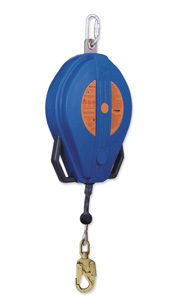
Modern materials provided manufacturers with lightweight, durable solutions toward improving the wearability and effectiveness of fall protection harnesses. The first premium comfort safety harness was designed in 2011 by a collaboration of ergonomics experts, industrial designers, and mechanical engineers. New age safety harnesses became just as comfortable to wear as an article of work clothing.
Today’s fall protection harnesses and safety lanyards meet strict OSHA standards and rigorous industry-specific requirements. Personal fall protection equipment is constructed with state-of-the-art materials. Safety harnesses are comfortable enough to wear for an entire workday and safe enough to prevent serious injury. Employees can easily adjust full-body harnesses to fit to size. Personal fall protection equipment does not impede employees’ progress yet upholds fall safety at the workplace to the highest standard.
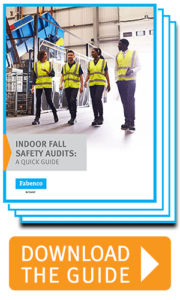
Construction industry employees are protected within the workplace by the use of OSHA regulated fall protection systems. Hazardous workplace areas such as ladderways, work platforms, and any work surface raised 4-feet or higher should be protected. As per the 1994 Subpart M Fall Protection Standard, employers must provide OSHA compliant fall protection systems like a safety gate, guardrails, mid-rails, screens, or solid surfaces around hazardous workplace areas.
Employee fall protection has progressed significantly throughout the last 50 years. OSHA’s declaration that posted signage warning of a potential hazard is not acceptable fall protection has transformed employers’ attitudes regarding fall safety. Modern materials and technology have drastically improved personal fall protection equipment and workplace fall protection systems. Utilizing things like harnesses, lanyards, self-retracting lifelines, guardrails, and/or a safety gate is now a best practice and today’s construction industry is monumentally safer as a result.





